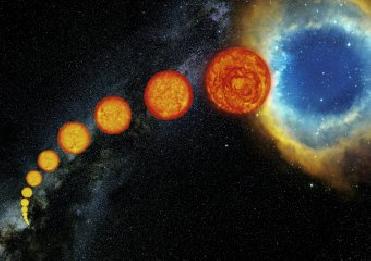
An artist's conception of 'red giants'. Image credit: ESO
PARIS (BNS): The mystery behind the unusually year-long variations in the luminosity of some Sun-like stars at the twilight of their lives has further deepened.
To understand the inexplicable phenomena, astronomers have conducted a study of 58 such stars in our galactic neighbour, the Large Magellanic Cloud, for over two and half years.
However, their findings seem to contradict all the previously-conceived models and further deepen the mystery.
About one-third of all Sun-like stars in the Milky Way and other galaxies experience unusual year-long variations in their brightness. All stars with masses similar to our Sun become, towards the end of their lives, red, cool and extremely large, just before retiring as white dwarfs. Also known as �red giants�, these elderly stars exhibit very strong periodic variations in their luminosity over timescales up to a couple of years.
�Such variations are thought to be caused by what we call �stellar pulsations�. Roughly speaking, the giant star swells and shrinks, becoming brighter and dimmer in a regular pattern. However, one third of these stars show an unexplained additional periodic variation, on even longer timescales � up to five years,� said Christine Nicholls from Mount Stromlo Observatory, Australia, lead author of a paper reporting the study.
By using data provided by European Southern Observatory�s Very Large Telescope, the researchers tried to solve the �cosmic puzzle� by narrowing down the plethora of possible explanations proposed by theoreticians.
In this case, however, the observations are incompatible with all previously conceived models.
�The newly gathered data show that pulsations are an extremely unlikely explanation for the additional variation.
�Another possible mechanism for producing luminosity variations in a star is to have the star itself move in a binary system. However, our observations are strongly incompatible with this hypothesis too,� said team leader Peter Wood.
The team found from further analysis that whatever the cause of these unexplained variations is, it also causes the giant stars to eject mass either in clumps or as an expanding disc. �A Sherlock Holmes is needed to solve this very frustrating mystery,� said Nicholls.
 Previous Article
Previous Article Next Article
Next Article













The Indian Air Force, in its flight trials evaluation report submitted before the Defence Ministry l..
view articleAn insight into the Medium Multi-Role Combat Aircraft competition...
view articleSky enthusiasts can now spot the International Space Station (ISS) commanded by Indian-American astr..
view article